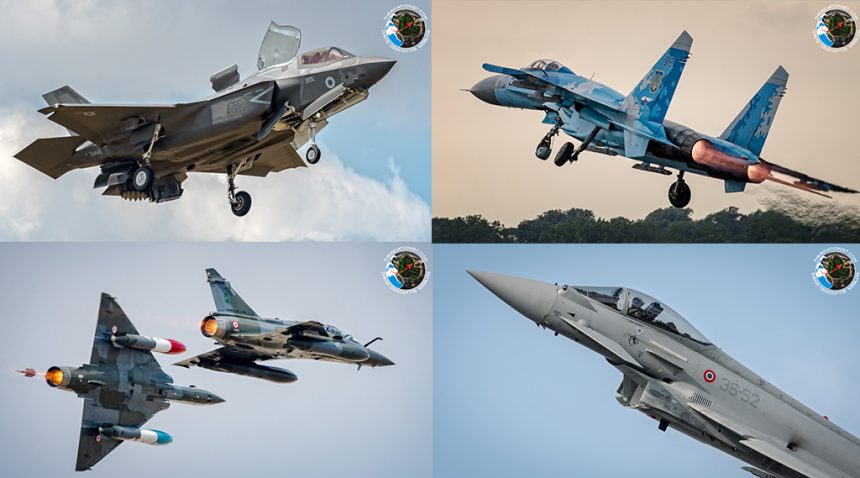The Royal International Air Tattoo 2018 at RAF Fairford, UK.
RIAT 2018: a benchmark of an airshow, with its diversity, the flying program, the static display. They all come together to form an unbeatable whole. It is the largest international air show in Europe, with high diversity of participants, both on the ground, as well as in the air. This year, the expectations were high, due to the RAF centenary. We attended the show and here’s what we have seen.
This year the show attracted a record breaking 185,000 people for the three day show as well as 302 aircraft from 43 air arms, representing 30 different nations.
For a person coming over from Eastern Europe, as in case of me, The Aviationist’s Polish contributor, the expectations were to see some of the finest western hardware in the air, including stealth aircraft or RAF demos that rarely visit Poland or Czech Republic, that are far more accessible in our part of Europe. The author was also hoping to see some USAF assets flying in the air, since the American military is somewhat reluctant in sending its jets and demos to the eastern part of Europe, Poland included. RIAT, considering its international profile, constitutes a diplomatic arena, similarly to other international aviation event. Often the flightline largely represents the diplomatic relations between the nations involved. For instance, RIAT’s static display featured Japanese assets that are really a rarity at the European air shows that are not focused on sales pitch.
When it comes to the flying display, it had some highlights.
First of the highlights was the F-35 Heritage Demo Team of the USAF. It was really something special to see the F-35 flying alongside a Mustang.
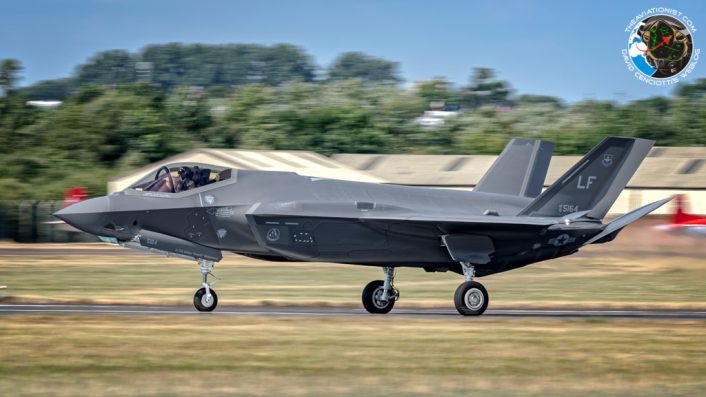
On the occasion of the RAF centenary, it was decided that a Spitfire would join the formation. In general, some interesting formation flypasts took place in the sky during the weekend. This included a tribute to the Dambusters, with the formation paying tribute to the Squadron’s past, immediate past/present, and its future. The RAF decided to have a formation flypast in the sky, with the Lancaster bomber acting as the leader, and followed by the F-35 and the Tornado, both of which were/will be used by the unit in question.
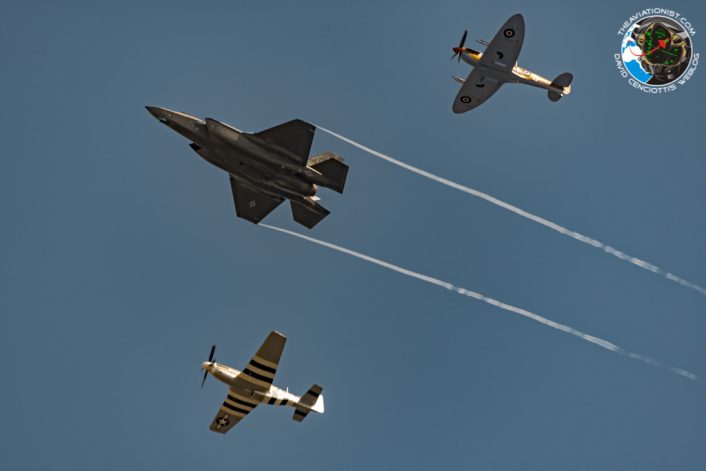
Another highlight of the show came in a form of a flypast on Saturday: RAF Fairford was visited by a B-2 bomber (Spirit of New York) that made a pass over the airfield being accompanied by two F-15 Eagles. The aircraft came to the UK direct from Whiteman Air Force Base, its homebase in Missouri.
When it came to the dynamic portion of the show, one could say that it was somewhat “standard” for an Air Tattoo. We’ve seen most of the RAF assets, including the Typhoon demo team, or the Red Arrows in the air. When it comes to the Commonwealth nations, Canada has sent its Hornet demo to the UK, in its new paint scheme. Other display teams included Frecce Tricolori, Royal Jordanian Falcons or the Couteau Delta Tactical Display.
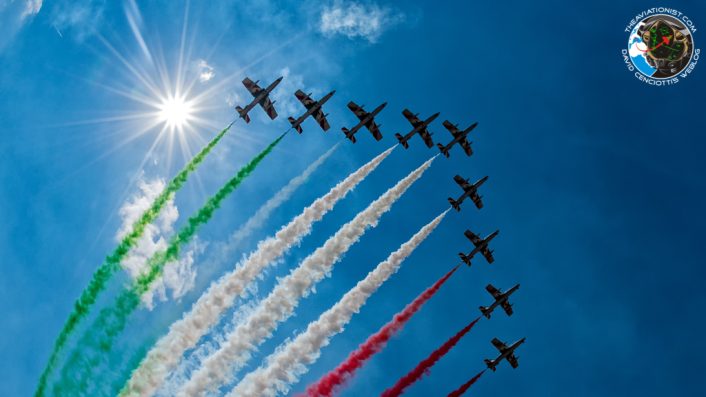
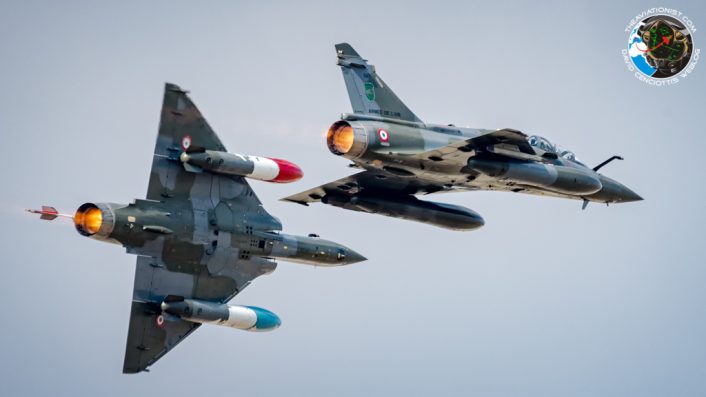
Staying with the word “tactical”, one should note that many of the displays honored this type of a routine, instead of showcasing the full, maybe sometimes unnecessary capabilities of the aircraft. This was visible most clearly in case of the C-27 Spartan demo of the Italian Air Force, as it no longer included the infamous loop or knife-edge pass – this was a major disappointment. One should say that it looked quite modest, when compared to the Airbus A400M display, featuring a maneuver involving a 120 degrees bank angle. The Atlas was being flown by an Airbus test pilot and wore the RAF100 livery. It was suggested that the plane flying was the last one to be received by the RAF.

Typhoon demo of Aeronautica Militare was brilliant as usual, on the other hand, with the pilot being able to fully display the jet’s capabilities.
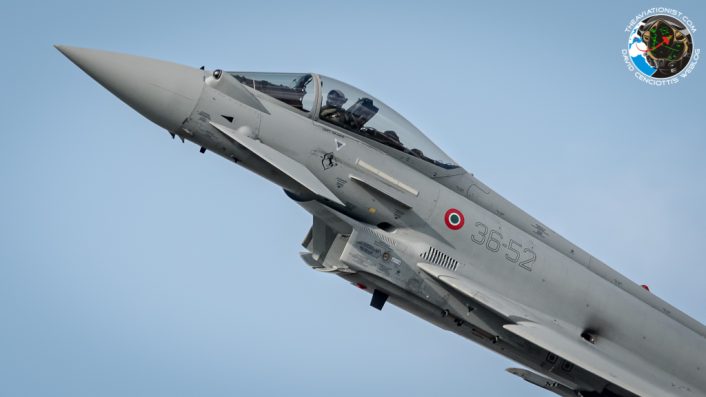
Couteau Delta team, replacing the famous Ramex Delta formation, also flew a brilliant display with numerous tactical maneuvers and the jets flying in extremely tight formations.
Moreover, the French also sent their Rafale duo team, representing the Marine Nationale and simulating carrier ops routines, as well as their Rafale Solo display.
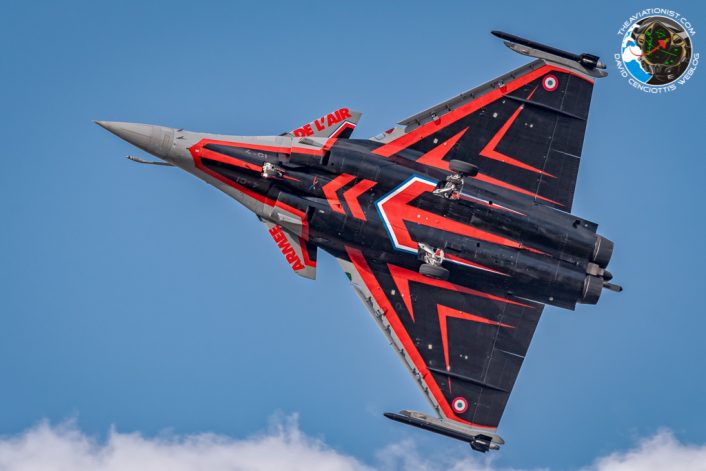
Four F-16 demos also displayed at RIAT, all being different in character. The Polish Air Force Tiger Demo Team exhibited its new display routine, including numerous moments when vapor cones were forming on the aircraft. Interestingly, the Polish F-16 also made a short landing with the landing parachute being deployed – which was a unique element of the routine. Greek F-16 of the Zeus demo team also flew an interesting routine with numerous high-g maneuvers involved. The Belgian Air Component demo team, with its new pilot, callsign “Vador”, also did a good show. Notably, the Belgian jet, during the current airshow season, is going to have its horizontal stabilizer repainted, to match with the show where it performs – in case of RIAT we could have seen RAF100 livery on that control surface. And last, but not least, Solo Turk closed the list of the F-16 demos, with its display being quite spectacular, especially on Sunday, when the Turkish Falcon was scheduled to fly in the morning.
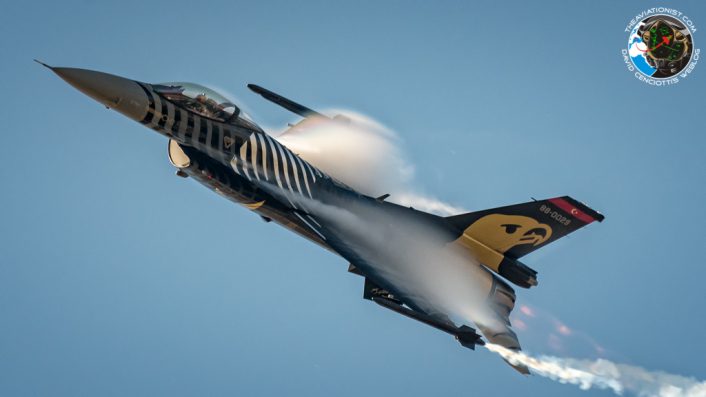
Even though the weather was very hot, there was still some humidity left in the air then, which made it possible for the jet to break through the air and show off some vapor. Swiss Air Force was another of participants, sending its PC-7 team flying a formation with its Hornet Solo. Speaking of Hornets, alongside the Swiss and Canadian demos, the Finns also showcased their flying program. The show announcer mentioned the fact that the latter two nations had their flight control software updated in the jet, which enhanced their AoA performance – yet again, it needs to be said that the three Hornet demos were very different, even though the airframe was the same. If the author was to point to the one he liked the most, then the Finnish pilot would win, for his low level flying, while the Canadian Hornet had the most interesting livery. Notably, the Canadian demo jet was flying in its special colors on Friday and Saturday, while on Sunday the RCAF used a spare jet, wearing a regular, gray color scheme. A major highlight also came in a form of a British F-35B performing a hover in front of the crowd. Helicopter demo teams included the RAF Chinook Display team, as well as the Finnish NH90. US CV-22B Osprey also made a dynamic display at RIAT.
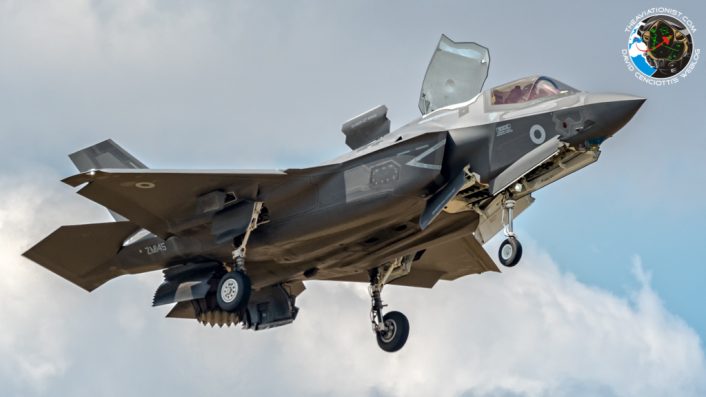
The locals also showcased some of their vintage flying hardware, including the Battle of Britain Memorial Flight, now involving a Spitfire, Mustang, DC-3 (C-47) and a Lancaster. The big planes, referred to as the “bombers” by the show announcer, flew some close formations and even did a break. This was an interesting and new sight to see, compared with the previously employed display routines. Historical displays also included The Great War Display Team, the show of which was very reminiscent of the one presented by the Pterodactyl Flight group we admired during the Poznan Air Show event this year.
One should also say that the expectations of the British citizens are inverted – meaning that they come to RIAT to see the eastern designs in their sky. Here, they have every right to be disappointed. Poland, which is almost a “permanent” presence at RIAT, highly valued for its MiG-29 Fulcrum or Su-22 Fitter demos, did not send any of those aircraft to the UK. The Fulcrum was not even scheduled to go to the UK. This is partially caused by the fact, as the unofficial info suggests, that both fleets have been grounded now, due to the K-36 ejection seat maintenance issues (both the Fitter, as well as the Fulcrum use these seats) and suspected faulty operation, following the recent fatal crash of the Fulcrum. Moreover, the MiG-21 LanceR demo team of the Romanian Air Force suffered from a crash just one week before RIAT, which also rendered the participation of that jet in the British event impossible.
It is interesting though, that Poland was not willing (did not ever confirm that) to send its MiG-29 to the British show, given the Minsk Mazowiecki Fulcrum squadron’s heritage and links to the RAF Squadron 303. Seeing a Fulcrum fly in a formation with the Hurricane (as it happened in Cosford), Spitfire or the Mustang would really have been something. The East was represented by the ‘beast’ – the Ukrainian Su-27 Flanker demo, which really was a highlight for the British audience, not so much for the Eastern Europeans, who, comparing the Ukrainian demo to the routines flown by the Russians, could have been mildly disappointed. Also, as flares are prohibited at the RIAT due to safety concerns (weapon storage areas), this element was cut – both from the Flanker display, as well as from any display routine – which further diminished the wow factor entailed by the Sukhoi’s jet.
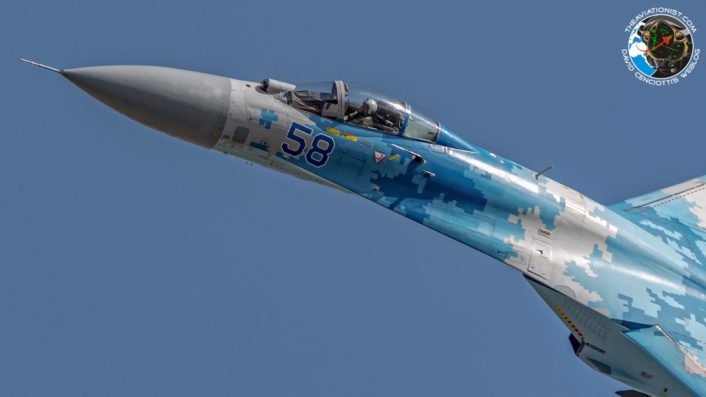
Here we come to a matter which seemed to kill the special character of the RAF100 RIAT – the historic connections with the Commonwealth nations or the allies were not really honored during the show. Someone was expecting something really special. Except for Canada and Australia, the connections with Singapore, Malaysia, India, South Africa and other nations who were colonially associated with the UK did not show in spite of many spotters and aviation enthusiasts “prayers”. This is a field that could be potentially explored to make the show even more interesting – for instance, the presence of Indian Su-30MKI aircraft would have made RIAT more exotic, even though the JASDF (Japan Air Self Defense Force) Kawasaki C-2 at its first Air Tattoo was a big thing.
This is largely a “what if” portion of the text, however, especially for those more used to the RIAT; given the occasion of the Centenary, one is tempted to ask questions, as to why the show was not much more spectacular considered the important anniversary the show celebrated.
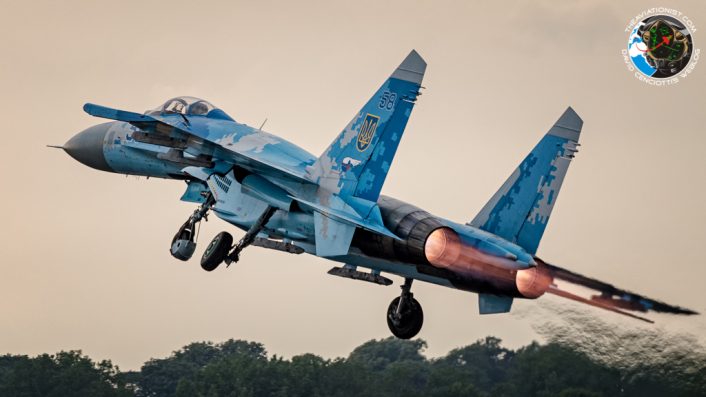
So, for an Eastern European, the RIAT this year was – in essence – just another RIAT; the best airshow in the Continent with all of its spectacular character involved. Whilst hoping for something really special, the author of this report, was not disappointed with his visit at all.
Meanwhile, the British opinions may vary, as the show did not differ in its character from what we have been witnessing in the past, giving us all a bittersweet feeling in the end – the next chance to organize a spectacular show would not be here in 50 years, probably, since we would need to wait for another “round” anniversary.
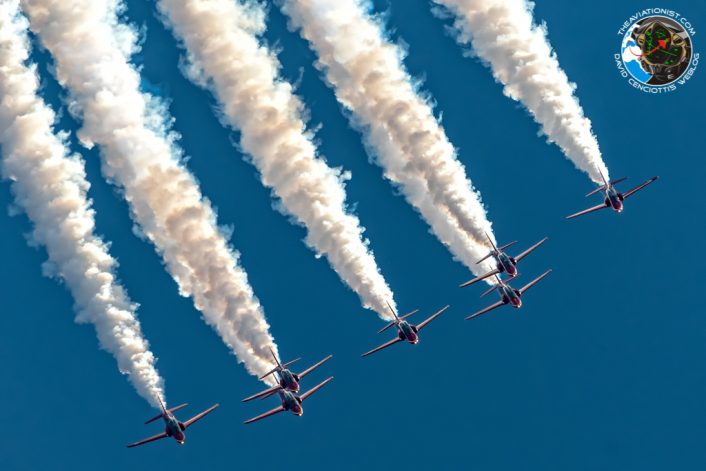
Addressing the question in the title, one should say that the answer depends on the point of view one takes – whether it is British or a European one, it might differ significantly.
All images: The Aviationist’s Jacek Siminski

